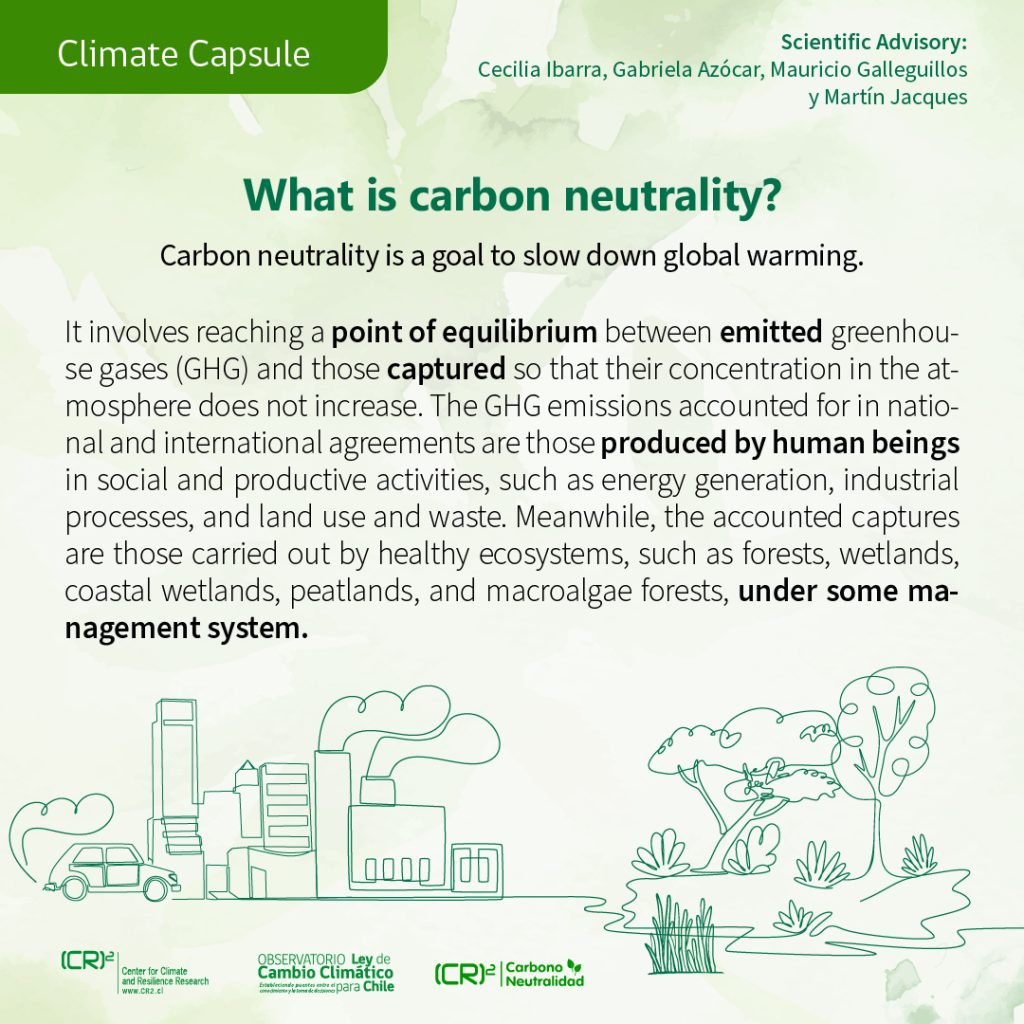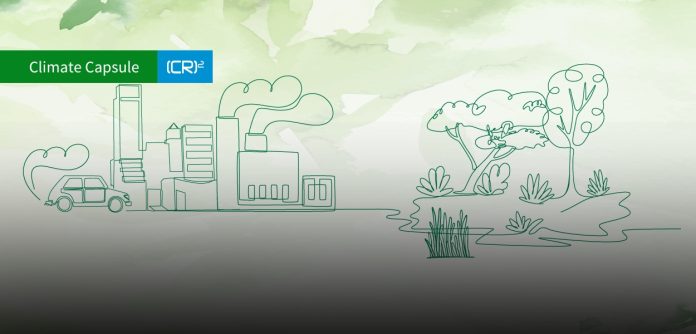 Greenhouse gases [1] (GHG) are naturally found in the Earth’s atmosphere and absorb thermal energy emitted by the sun and the planet’s surface. GHGs radiate this energy, producing what is known as the greenhouse effect, which has generated an ideal temperature to allow the evolution of life on Earth.
Greenhouse gases [1] (GHG) are naturally found in the Earth’s atmosphere and absorb thermal energy emitted by the sun and the planet’s surface. GHGs radiate this energy, producing what is known as the greenhouse effect, which has generated an ideal temperature to allow the evolution of life on Earth.
However, this natural process has been disturbed by human action. Social and productive activities have caused a higher concentration of GHGs in the atmosphere, increasing the planet’s surface temperature. The most abundant emissions are carbon dioxide (CO2), which remains in the atmosphere for decades to centuries.
The 2015 Paris Agreement established international objectives and guidelines for mitigating GHG emissions and adapting to the effects of climate change. Chile ratified this Agreement in 2017 and has set a goal to achieve carbon neutrality by 2050 at the latest, which has been established in the Climate Change Framework Law and in commitments to international organizations, mainly in the Nationally Determined Contributions (NDCs).
Carbon neutrality [2] is a goal that can be defined at different levels (international, national, etc.). It involves reaching a point of equilibrium between GHG emissions produced by human activities and the capture carried out by ecosystems, such as native forests, wetlands, peatlands, and macroalgae forests. By achieving this balance between emissions and captures, increasing the concentration of GHGs in the atmosphere is avoided, which slows global warming.
The GHG emissions considered in these agreements are those directly related to human activities and accounted for in National Inventories (INGEI), such as the generation of electricity we use domestically and industrially, and the refined fossil fuels used for transportation. Additionally, waste and those produced by industrial processes, agriculture, forestry, and other land uses are included.
The component that counteracts these emissions is to capture. The INGEI accounts for captures made by ecosystems managed by humans, such as protected or restored areas and forest plantations. Natural ecosystems can largely buffer emissions from the energy and industrial sectors, representing an advantage for Chile, which has vast vegetated areas.
Accurate estimation of ecosystems’ carbon capture and retention capacity is essential to defining and implementing actions to achieve the carbon neutrality goal. In this sense, Chile faces a challenge associated with quantifying the carbon capture potential of ecosystems, especially those less studied, such as coastal and marine ecosystems, coastal wetlands, and macroalgae forests [3].
Notes
[1] Among the main GHGs are water vapor (H2O), carbon dioxide (CO2), nitrous oxide (N2O), methane (CH4), ozone (O3) and chlorofluorocarbons 11 and 12.
[2] We use carbon neutrality as two separate words since it is written this way in Chile’s Nationally Determined Contribution
(https://mma.gob.cl/wp-content/uploads/2020/04/NDC_Chile_2020_español-1.pdf), however, the RAE’s recommendation is to use carbononeutrality (https://www.fundeu.es/recomendacion/neutralidad-en-carbono-o-carbononeutralidad-no-carbono-neutralidad/).
[3] Farías, L., K. Ubilla, C. Aguirre, L. Bedriñana, R. Cienfuegos, V. Delgado, C. Fernández, M. Fernández, A. Gaxiola, H. González, R. Hucke-Gaete, P. Marquet, V. Montecino, C. Morales, D. Narváez, M. Osses, B. Peceño, E. Quiroga, L. Ramajo, H. Sepúlveda, D. Soto, J. Valencia, E. Vargas, F. Viddi. (2019). Nine ocean-based measures for Chile’s Nationally Determined Contributions. Report of the Oceans table. Santiago: COP25 Scientific Committee; Ministry of Science, Technology, Knowledge and Innovation. https://cdn.digital.gob.cl/filer_public/f8/68/f8681032-771f-4666-b745-5c41552de2d8/16oceanos-nueve-soluciones-para-las-ndc.pdf




